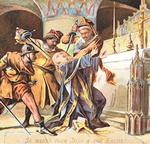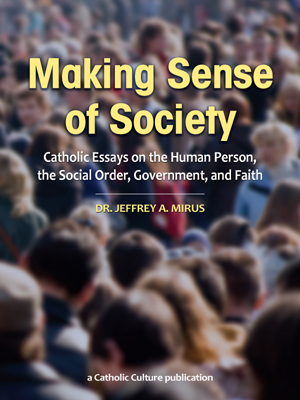The Virgen Del Pilar
by Zsolt Aradi
Tradition relates that it was St. James the Apostle who came to Spain to spread the Gospel. January 2nd, forty years following the birth of Our Saviour, says the legend, St. James was already in Saragossa, walking along the Ebro River with seven of his disciples whom he had chosen to help him to teach the faith.
It was a clear, beautiful night, the sky aglow with innumerable stars.
While St. James walked with his brethren along the Ebro River and talked to them, Our Lady, then still on this earth, was in Jerusalem. She prayed ardently to her Son for the success of the mission of St. James because she knew about the great venture. And, as Mary prayed with much fervor, Jesus appeared to her and promised help to St. James. At the same time, He told His Mother that angels would take her to Spain to encourage the Apostle. And immediately the seraphs carried Our Lady through the skies over the Mediterranean to Saragossa where James the Apostle was kneeling at the banks of the Ebro. He suddenly saw a radiant light and then his ears were filled with heavenly music. All the disciples shared with him the beautiful vision. Mary appeared to them seated on a throne, borne by angels and while James the Apostle and the disciples gazed up at her, she smilingly told him that she had come to help. She then asked that a church be erected on the spot. And as evidence of her appearance, Our Lady took from the hands of one of the angels at her service a small column of jasper upon which there was placed a beautiful small statue of herself, carved in wood.
Then the apparition faded out.
The pillar with the statue, however, remained there in Saragossa and this is the statue of Our Lady of the Pillar venerated ever since in that Spanish city.
St. James succeeded in his mission though he died the death of a martyr. His earthly remnants are buried in the city of Santiago de Compostela and he is considered the patron saint of Spain.
Very soon after the vision accorded to St. James and the disciples, a modest chapel was built as Our Lady had requested. This chapel was eventually destroyed and many other churches and chapels shared the same fate; the pillar with the statue, however, remained intact. It is a fact that Romans, Goths, Moors, Vandals and other invaders could never desecrate or destroy the statue itself because the people of Saragossa defended it with fierce heroism. All the kings of Spain, many other foreign rulers and saints have paid their devotion before this statue of Mary. St. John of the Cross, St. Teresa of Avila, St. Ignatius of Loyola are among the most outstanding ones. The present church was built in 1686 by Charles II, King of Spain.
"The sentiment of the Saragossans toward their beloved Virgen del Pilar is far different from the ordinary devotion paid to a favorite saint. It is an inheritance from their forefathers, a love that is born with them, and ends only with their lives. It is interwoven with their patriotism, with their nationality, with their home life, and with their daily tasks and amusements… In their talks, she is the ever-recurrent theme, and in their patriotic songs, they acclaim her as the leader of their nation. Saragossans say that the church of the Virgen del Pilar was the first raised in her honor and will last as long as the faith."
This item 2983 digitally provided courtesy of CatholicCulture.org






